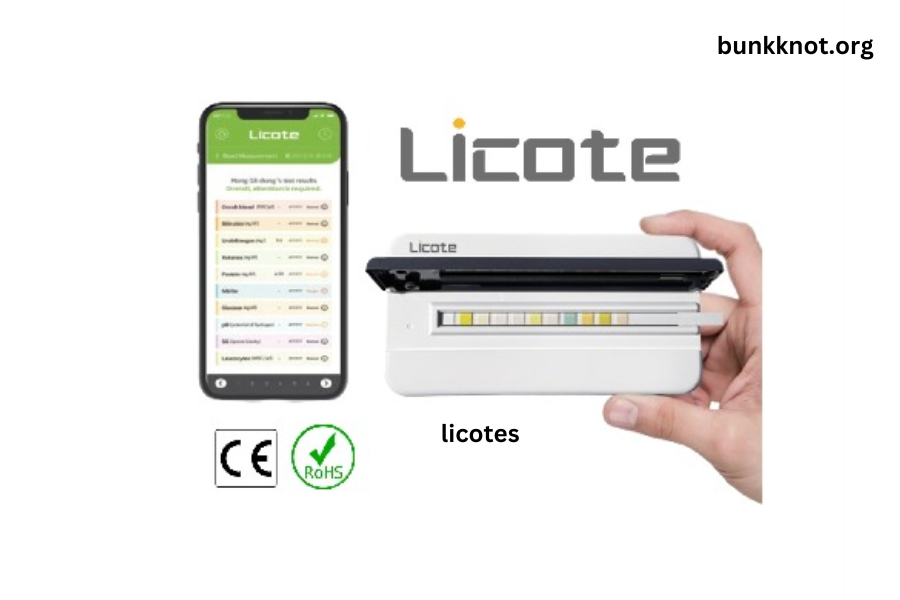At Bunk Knot, we understand the importance of the Bunk Knot, renowned for its strength and durability in knot-tying. Whether you’re transporting goods, camping, or sailing, mastering the Bunk Knot is essential. This comprehensive guide will provide you with step-by-step instructions on tying the Bunk Knot, helping you fully grasp its practical applications and benefits.
How to Tie the Bunk Knot
Before delving into the steps of tying the Bunk Knot, it’s crucial to understand the mechanics behind its effectiveness. Known also as the Trucker’s Hitch or Lorry Knot, the Bunk Knot provides a mechanical advantage that ensures items are securely fastened and can endure significant force. Its versatility and strength make it a favorite among outdoor enthusiasts, sailors, and professionals in various industries.
The Bunk Knot’s adaptability allows it to be used in a wide range of scenarios, from securing cargo during transport to setting up camp or rigging sails. By mastering this knot, you’ll gain a valuable skill that enhances safety and efficiency in many practical applications.
Basic Tools and Materials for the Job
To successfully tie a Bunk Knot, you’ll need a few basic tools and materials. These items ensure that the knot is tied correctly and maintains its strength and durability under various conditions. Here’s what you’ll need:
- Rope or Cord: The primary material for tying the Bunk Knot. Ensure the rope is strong, durable, and appropriate for your specific use case.
- Anchor Point: A sturdy and reliable point where the rope will be secured. This could be a post, a tree, or any solid object that can withstand the tension of the knot.
- Gloves: Optional but recommended, especially if you’re working with rough or abrasive ropes. Gloves protect your hands from friction burns and provide a better grip.
- Carabiners: These can be used for additional security and ease of attachment, particularly in climbing or sailing scenarios.
- Measuring Tape: Useful for ensuring you have the right length of rope for your specific application.
By having these essential tools and materials on hand, you’ll be well-prepared to tie a secure and reliable Bunk Knot, regardless of the task at hand.
Step-by-Step Guide to Tying the Bunk Knot
Step 1: Loop Formation
Begin by forming a loop near one end of your rope. The size of the loop should correspond to the diameter of the object you’re securing and the level of tension expected. For larger objects or situations requiring higher tension, opt for a larger loop.
Step 2: Twining the Standing Part
Next, take the free end of the rope and wrap it around the object you intend to fasten. Bring this free end back towards the loop you created in Step 1. Form another loop by wrapping the free end around the standing part of the rope.
Step 3: Completing the Bunk Knot
Pass the free end through the initial loop you made in Step 1, creating a half-hitch. Pull the free end to tighten the half-hitch securely against the rope, ensuring the loop grips firmly.
Step 4: Tightening the Knot
To add tension, pull the free end away from the object you’re securing. This action will tighten the loop around the object, ensuring a snug and secure fit.
Step 5: Finalizing the Knot Tension
After achieving the desired tension, secure the free end by tying additional half-hitches or a finishing knot, such as a square knot or a double half-hitch. This final step is crucial for maintaining the tension and preventing any slippage.
By following these steps, you can confidently tie a Bunk Knot that will hold strong and secure, whether you’re camping, transporting goods, or sailing.
How to Use the Bunk Knot: Practical Applications
The Bunk Knot, with its robust and reliable nature, has a range of practical applications across various fields. Its versatility makes it an essential knot to master. Here are some common uses:
- Outdoor Adventures: When camping, the Bunk Knot is perfect for securing tents, tarps, and gear. Its strength ensures that your equipment remains in place, even under challenging weather conditions.
- Transport and Cargo: In logistics and transportation, the Bunk Knot is used to secure loads on trucks, trailers, and other vehicles. By creating a tight and stable hold, it helps prevent cargo from shifting or falling during transit.
- Sailing: Sailors often use the Bunk Knot to tie down sails and rigging. Its ability to handle significant force makes it ideal for keeping essential equipment securely fastened while navigating rough waters.
- Climbing and Mountaineering: Climbers use the Bunk Knot to anchor themselves or secure gear. Its strength and reliability are crucial for safety when dealing with high-stress environments.
- DIY Projects: Whether you’re working on a home improvement project or setting up a makeshift shelter, the Bunk Knot provides a reliable solution for holding materials together.
- Emergency Situations: In emergencies, such as during natural disasters or rescue operations, the Bunk Knot can be used to quickly secure items or create makeshift harnesses and anchors.
By touching the Bunk Knot into your skill set, you can enhance your ability to handle a variety of tasks effectively and safely, making it an invaluable tool for many practical situations.
Our Expert Tips for Successfully Using the Bunk Knot
To ensure you get the best results when using the Bunk Knot, consider these expert tips:
Choose the Right Rope: Select a rope that suits your specific needs—whether it’s for heavy-duty cargo or lighter applications. The strength and flexibility of the rope can impact the knot’s effectiveness.
Practice Makes Perfect: Take the time to practice tying the Bunk Knot to gain proficiency. The more you practice, the quicker and more accurately you’ll be able to tie it in real-life scenarios.
Ensure Proper Loop Size: Make sure the initial loop is appropriately sized for the object you’re securing. A loop that’s too small or too large can affect the knot’s ability to hold under tension.
Keep the Rope Taut: As you tie the knot, ensure that the rope is kept taut to prevent slack. A taut rope ensures a secure fit and minimizes the chance of the knot slipping.
Double-Check Your Work: After tying the knot, give it a thorough check to ensure it’s secure. Pull on the free end and the standing end to confirm that the knot is properly tightened.
Use Gloves if Necessary: If you’re working with rough or thick rope, consider wearing gloves to protect your hands and improve your grip, making it easier to tie the knot.
Secure the Free End: Always make sure to finish by securing the free end with additional half-hitches or a finishing knot to prevent slippage and maintain the tension.
Adapt to Conditions: Be aware of environmental factors like weather and load weight. Adjust the knot or rope type as necessary to accommodate these conditions for optimal performance.
By following these tips, you can enhance the reliability and effectiveness of the Bunk Knot in various applications, ensuring it performs well under any conditions.
General Questions About the Bunk Knot
1. What is a Bunk Knot used for?
The Bunk Knot is used for securing objects tightly, making it particularly useful in various applications such as camping, transporting goods, sailing, and climbing. Its primary function is to create a secure and stable hold that can withstand significant force, preventing items from shifting or coming loose.
2. How strong is a Bunk Knot?
The Bunk Knot is known for its strength and reliability. It creates a tight grip that can handle substantial tension, making it suitable for heavy-duty applications. The knot’s ability to maintain its hold under stress is one of its key advantages, ensuring that your load or gear remains secure.
3. Is a Bunk Knot easy to tie?
While the Bunk Knot is relatively straightforward to tie once you get the hang of it, it does require some practice to master. The process involves creating loops and wrapping the rope in specific ways, which may take a few tries to perfect. However, with practice, tying the Bunk Knot becomes quicker and more intuitive.
4. What is the difference between a Bunk Knot and a Sheet Bend?
The Bunk Knot and the Sheet Bend are different in their structure and applications:
- Bunk Knot: Also known as the trucker’s hitch or lorry knot, it is designed for creating a mechanical advantage to tighten and secure loads. It involves creating loops and pulling the rope tight to secure the object, making it ideal for securing items under significant tension.
- Sheet Bend: This knot is used to join two ropes of different diameters or materials. It creates a secure connection between the ropes, allowing for a strong and reliable join. The Sheet Bend is commonly used in scenarios where two ropes need to be combined to extend their length or add strength.
Understanding these differences helps in selecting the right knot for specific tasks and ensuring the best performance in various applications.
Our Mission at Bunkknot.org
At Bunkknot.org, our mission is to empower individuals with the knowledge and skills needed to master essential knot-tying techniques, including the versatile Bunk Knot. We are dedicated to providing comprehensive, easy-to-follow guides and resources that enhance your ability to securely fasten and manage loads in various settings.
We aim to:
- Educate and Inform: Offer clear, detailed instructions and educational materials on the Bunk Knot and other knot-tying techniques, ensuring that users of all skill levels can learn and apply these skills effectively.
- Promote Safety and Efficiency: Equip our users with the tools and knowledge to use knots safely and efficiently, minimizing risks and maximizing the effectiveness of their applications, whether in outdoor adventures, transportation, or other practical scenarios.
- Foster Skill Development: Support continuous learning and skill development by providing tips, best practices, and practical applications that help users refine their knot-tying abilities and tackle various challenges with confidence.
- Support Diverse Needs: Address a wide range of needs by demonstrating the Bunk Knot’s versatility and applications across different fields, from camping and sailing to climbing and DIY projects.
- Build a Community: Create a space where enthusiasts and professionals can connect, share experiences, and contribute to a growing repository of knot-tying knowledge and expertise.
At Bunkknot.org, we are committed to enhancing your knot-tying proficiency and helping you achieve reliable, secure results in all your endeavors.
FEATURED POST
https://guia-automovil.com/2023/02/06/las-mejores-pick-ups-para-este-2023
As we journey through 2023, the pick-up truck market unveils a remarkable selection of vehicles designed to meet various needs and preferences. Whether you’re in search of a rugged off-road adventurer, a reliable workhorse, or a versatile option for everyday driving, this year’s leading models have you covered. Let’s delve into the top pick-up trucks […]
https://finanzasdomesticas.com/china-prohibe-las-criptomonedas/
Introduction to China’s Cryptocurrency Ban China’s decision to prohibit cryptocurrencies has had a profound impact on the global financial markets. This significant…
https://finanzasdomesticas.com/negocios-internacionales/
International business is a complex and dynamic field that covers global trade, financial strategies, and economic policies. At Finanzas Domesticas, we provide…
Storecom FE AI: Revolutionizing Modern E-Commerce with…
E-commerce is undergoing a rapid transformation, fueled by technological innovations and the growing demand for personalized shopping experiences. One groundbreaking tool driving…
The Enigmatic Tradition of Morgıç: A Cultural…
Morgıç stands as a captivating and mysterious tradition that has captured the imagination of people across various regions for centuries. This unique…


















